is there such thing as too much rain in my garden?
newtook
15 years ago
Featured Answer
Comments (10)
Okiedawn OK Zone 7
15 years agolast modified: 9 years agoilene_in_neok
15 years agolast modified: 9 years agoRelated Discussions
Too much rain on my containers!
Comments (2)I'm having the same problem here in Mass. The good thing about containter gardens is that they are portable. Are they small enough where they can be moved under a tree or something. I have three five gallon pots with tomatoes growing and I move them under a tree when there is a downpour expected. They will get some water but not alot. Then when it stops raining I put them back in the spot where they would get sun if the sun ever comes back out. They are 4 times bigger than the ones I have growing in the garden, planted the same day. Hope this helps. Diane...See MoreToo much rain is a bad thing
Comments (3)I'm in the very eastern part if Kentucky and an having the exact same problem. My lettuce is the only thing that seems to be doing well under such conditions, and I'm waiting for a dry spell before I sow any if my pepper seeds as I'm pretty sure they would just rot anyway. :/ Hope things dry up a bit for you, too!...See MoreToo late for parsnips? -- OR remedy for too much rain
Comments (2)Planatus, thanks for that suggestion on pre-sprouting the parsnips. I will try that. I have already dug a trench for the parsnips just now, but I will cover it, because it is supposed to rain again. (That trench is just to make the soil for the parsnips nice and friable, so the seed can grow deep and long: I am not going to plant the seed at the bottom, in case you are worried!) And you're right about being grateful for the rain....See MoreDid too much rain kill my tomatoes?
Comments (5)Dorothy, After you received the rain from Ike, how quickly did they die? And, would I be correct in assuming your soil already had a lot of moisture in it before the rain from Ike? Usually, one heavy rainfall won't kill healthy tomato plants in just a matter of days. However, if this year's heavy rains had kept your soil pretty consistently wet, then Ike could have been "the straw that broke the camel's back" and finished them off. Normally, when we have exceptionally heavy rainfall here in Love County (like we had in the spring and early summer of 2007), my tomato plants will first show signs of nutritional deficiency for several weeks before they begin to die. There's not much you can do if that happens, and as you watch the signs of nutritional deficiency appear and worsen, you know they'll be followed by yellowing of the leaves, dropping leaves, and the wilting and then death of the whole plant. Usually, in order for the soil to be wet enough to kill the plants, the soil will have that sour smell. Here, in the raised beds (4" to 8" above grade) where I plant tomatoes and peppers, it takes about 8 weeks of excessively moist soil to kill a tomato plant. But, of course, everyone's situation is different and a lot of how long it takes would depend on how well you soil drains. There are many diseases that kill plants very suddenly, and I know that you probably have seen some of them in your many years of gardening. If it wasn't the rain from Ike that finished off already-too-waterlogged tomatoes, then it might have been southern blight. I haven't seen it often, but it will take out a plant in just a day or so, and without the foliar spotting that precedes a lot of the other wilts. As much rain as you have had, I would suspect it in the death of your plants....the cukes and okra as well. Even if they didn't die of waterlogged roots, I suspect the rain encouraged fungal and bacteria diseases that thrive in wet soil and on wet foliage. Dawn...See MoreOkiedawn OK Zone 7
15 years agolast modified: 9 years agomulberryknob
15 years agolast modified: 9 years agoshankins123
15 years agolast modified: 9 years agomulberryknob
15 years agolast modified: 9 years agoOkiedawn OK Zone 7
15 years agolast modified: 9 years agonewtook
15 years agolast modified: 9 years agoOkiedawn OK Zone 7
15 years agolast modified: 9 years ago
Related Stories
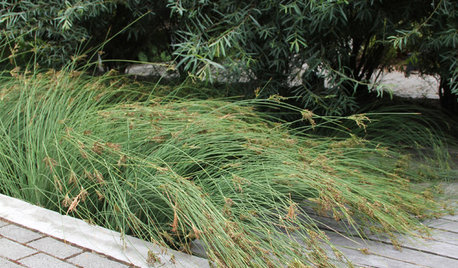
GARDENING GUIDESProtect a Precious Resource With a Rain Garden
Promote pure water and a beautiful landscape with a garden design that makes the most of the rain
Full Story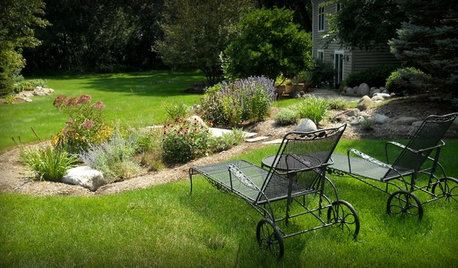
LANDSCAPE DESIGNHow to Design a Rain Garden That Loves Stormy Weather
Rain gardens have a special type of planting bed that drains rainwater. These tips can keep yours looking great
Full Story
HOUZZ TVHouzz TV: How to Install a Rain Barrel
This DIY tutorial shows how easy it can be to capture rainwater from your roof to use in your garden later
Full Story
GARDENING AND LANDSCAPINGDesign With Weather: Introduce a Rain Chain
Create something beautiful with the runoff from your roof
Full Story
GREEN BUILDINGJust Add Water: Rain Barrel Magic
Take your rainwater storage from practical to beautiful with a new breed of design-friendly rain barrels
Full Story
GREEN BUILDINGModern Design Captures Valuable Rain
Instead of letting a precious natural resource trickle away, these architectural features make the most of it
Full Story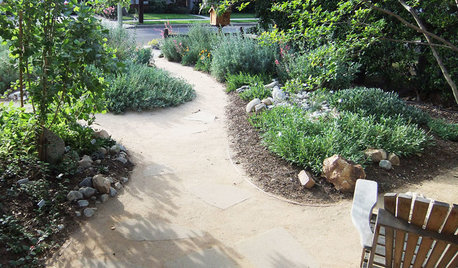
GARDENING GUIDES5 Things to Know About Watering Your Native Garden
Ensure the success of your new plantings with a smart approach to irrigation
Full Story
GARDENING GUIDES5 Things to Know About Weeding and Mulching Your Native Garden
What’s the best time to pull weeds? How thick should the mulch be? Here’s the scoop for a healthy landscape
Full Story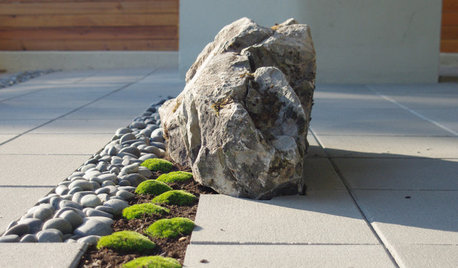
LANDSCAPE DESIGNDare to Mix Things Up in the Landscape
Courageously contrast plantings, materials and structures in your garden to create unexpected beauty and intrigue
Full Story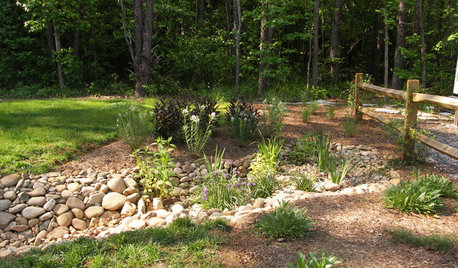
LANDSCAPE DESIGN5 Steps to Selecting the Right Plants for a Rain Garden
A simplified look at selecting plants for a rain garden
Full StorySponsored



shankins123